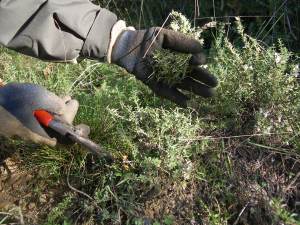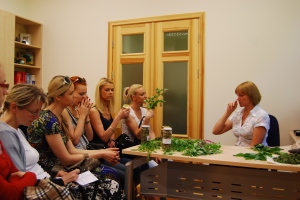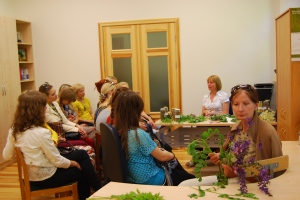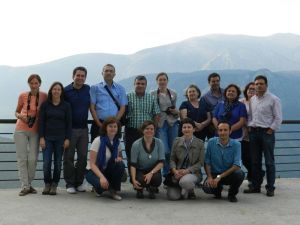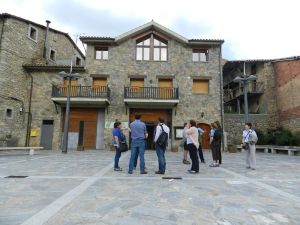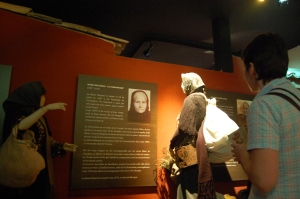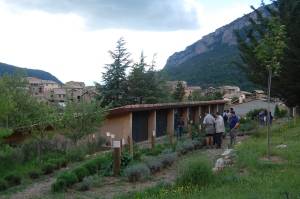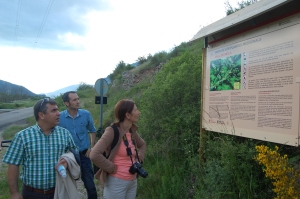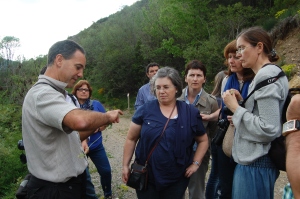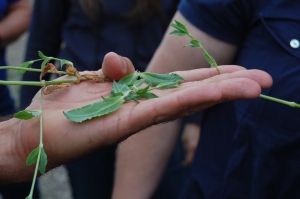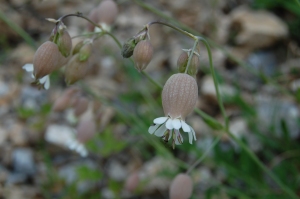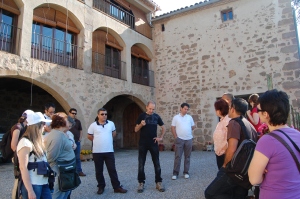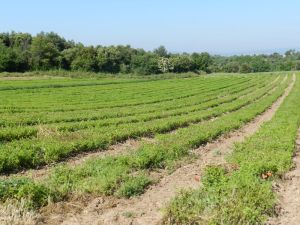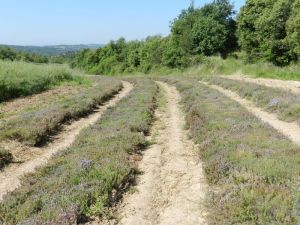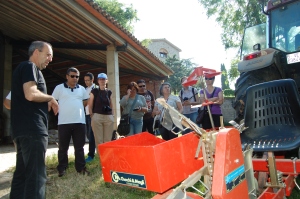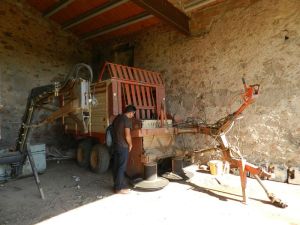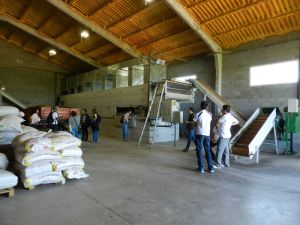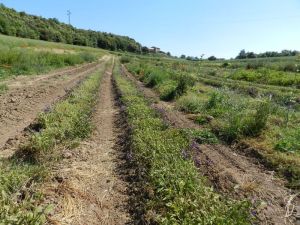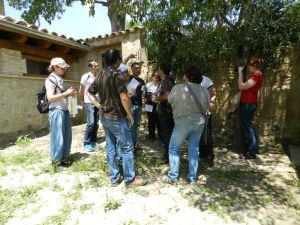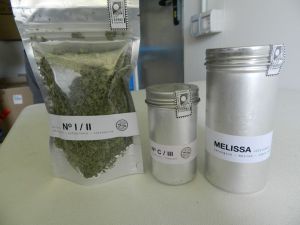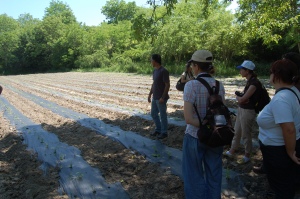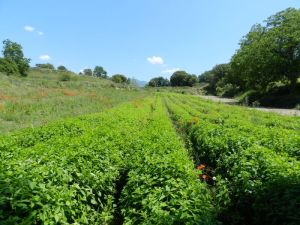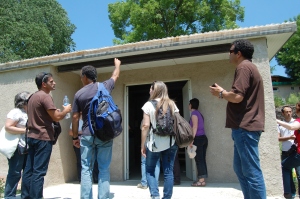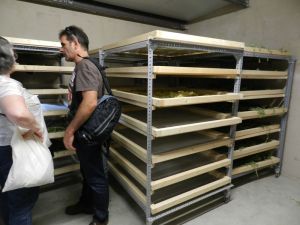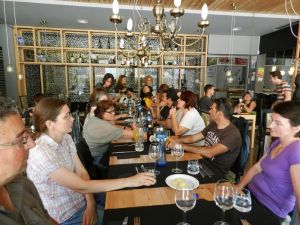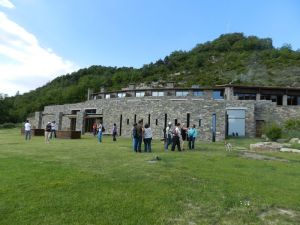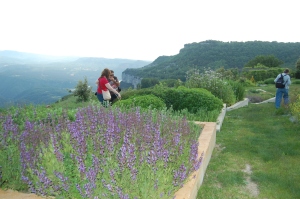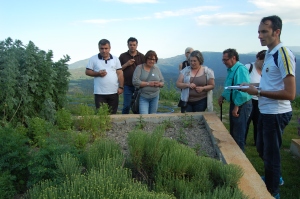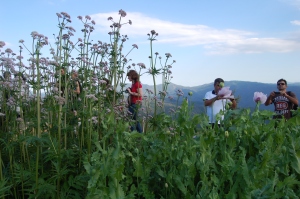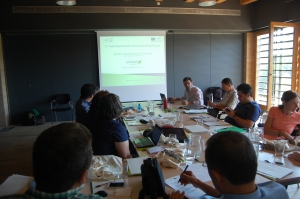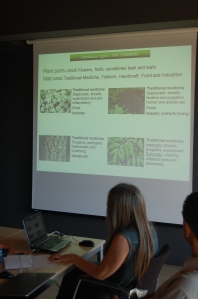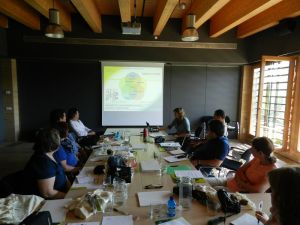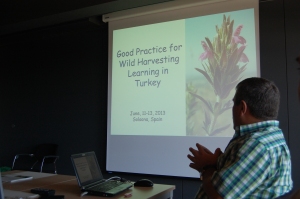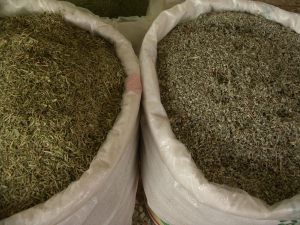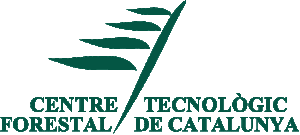During 2 years (from August 2011 to July 2013), four research and training organisations from Lithuania, Portugal, Spain and Turkey had been developing the necessary methodologies for implementing an effective training on wild harvesting of non wood forests products (NWFP), focusing specially in medicinal and aromatic plants (MAPs).
This was the objective of the project PLANT WILD: Forest Plants Wild Harvesting Learning in Europe, a Grundtvig Learning Partnership Association, with the aim of promoting employment opportunities in rural and mountainous areas and sustainable wild harvesting techniques, generating best training practices to obtain environmental and economical sustainability and determining tools to support trainers, learners and professionals. The project also allowed partners to know other realities that may be applied in their territories.
During meeting different topics were discussed:
- Mission and working lines of partners related to the NWFPs, and specifically to MAPs
- Research, technology transfer and training for adults in NWFPs in each partner’s country
- Sustainable wild harvesting of MAPs in each partner’s country and challenges for implementing training
- Businesses of wild harvesting of MAPs in each partner’s country and challenges for implementing training
- Good practices on training MAPs wild harvesting
Some recommendations were advised:
- More people is searching new business or labour opportunities in rural areas, so more people are interested in harvesting of wild MAPs. New collectors have low information in botanical identification and habitats knowledge, so training is needed on both subjects
- The use of good practices for the wild harvesting of MAPs, with support in the laws and with control, is needed to ensure that these natural resources are long term sustainable. Mainly non professional harvesters, commissioned by buyers, should receive regular training in order to assure the sustainability of the activity.
- It is necessary to create an effective management information system which is based on professional knowledge of plant reproductive biology and accounting methodology of plant harvesting for sustainable use of wild resources of MAPs.
- To avoid overexploitation, a local or regional entity should be responsible for the MAPs wild harvesting activity control.
- New entrepreneurial opportunities related to wild harvesting of MAPs need updated information or training on different uses of value chain (good collection practices, good manufacturing practices, market information) in order to obtain quality products.
- Plant material quality is not differentiated when doing wild harvesting. Collectors and even enterprises that use high quality botanicals need to be trained on varieties and chemotypes, phenology of each species related to the major active compounds content.
- Local population and professional harvesters should receive updated information about good collection and processing practices, in order to obtain good quality raw material.
- Many harvesters use obsolete facilities for processing the collected plant obtaining a low quality product. They should be trained on good manufacturing practices.
So, the rising public interest in collecting and usage of MAPs leads to the need to develop the best training model that provides diverse knowledge on sustainable wild harvesting and usage of MAPs.
Knowledge of plant biology, ecology, botanical identification, bioactive compounds and storage patterns, theoretical and practical skills on plant harvesting and post-harvesting technologies, knowledge of market and business framework, as well as knowledge on legal acts and legislative measures regulating wild plant harvesting, are essential for professional harvesting and sustainable usage of MAPs resources.
According to that six training modules for training are proposed:
- Basics of plant science with emphasis on MAPs.
- Knowledge of MAP species.
- Harvesting of raw materials and use.
- Sustainable wild harvesting: methodology, legislation and control.
- Post-harvest processing of MAPs.
- Marketing and business.
More information in the Report conclusions GRUNDTVIG PLANT WILD
- CATALAN: Aprenentatge sobre la recol•lecció silvestre de plantes forestals a Europa
- LITHUANIAN: Laukinių augalų rinkimo mokymasis Europoje
- PORTUGUESE: Aprendizagem sobre colheita silvestre de plantas da floresta na Europa
- SPANISH: Aprendizaje sobre la recolección silvestre de plantas forestales en Europa
- TURKISH: Avrupa’da Yabani Bitkilerin Hasadının Öğrenilmesi

